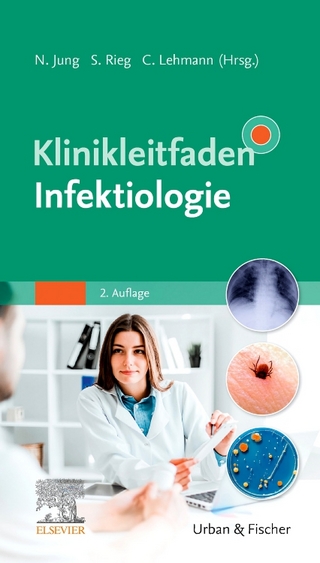
Immunopharmacology Reviews
Kluwer Academic/Plenum Publishers (Verlag)
978-0-306-43273-6 (ISBN)
- Titel ist leider vergriffen;
keine Neuauflage - Artikel merken
1 The Characterization of Immunotherapeutic Agents.- 1. Introduction.- 2. Immunotherapeutic Agents.- 2.1. Immune System-Derived Biologicals.- 2.2. Bacteria and Fungi.- 2.3. Drugs.- 3. General Features of the Mode of Action of Immunotherapeutic Biologicals and Drugs.- 3.1. Classification.- 3.2. Pharmacokinetics.- 3.3. Immunopharmacodynamics.- 3.4. Toxicology.- 3.5. Side Effects.- 3.6. Dose and Route of Administration.- 3.7. General Clinical Pharmacology Principles Relating to Drug Development.- 4. Preclinical Characterization of Agents.- 4.1. In Vitro Immunopharmacology.- 4.2. In Vivo Characterization of Immunotherapeutic Agents.- 5. Preclinical Therapeutic Studies in Animal Models.- 5.1. Physiological Immunodeficiencies.- 5.2. Iatrogenic Immunodeficiencies.- 5.3. Autoimmune Disease Models.- 5.4. Infections.- 5.5. Cancer.- References.- 2 Pharmacokinetics of Immunomodulators.- 1. Introduction: Pharmacokinetics.- 1.1. Absorption.- 1.2. Distribution.- 1.3. Elimination.- 2. Pharmacokinetics of Immunomodulators.- 2.1. Biologically Derived Immunomodulators and Related Derivatives.- 2.2. Chemically Synthesized Immunomodulators.- 3. Alteration of Drug Biotransformation by Immunomodulators.- References.- 3 Immunotherapy and Biological Therapy of Cancer: Current Clinical Status and Future Prospects.- 1. Introduction.- 2. Malignant Melanoma.- 3. Renal Cancer.- 4. Superficial Bladder Cancer.- 5. Gastrointestinal Malignancies.- 6. Gynecologic Malignancies.- 7. Lung Cancer.- 8. Breast Cancer.- 9. Head and Neck Cancer.- 10. Central Nervous System Tumors.- 11. Kaposi Sarcoma.- 12. IL-2-Induced LAK Cell Therapy.- 13. Colony-Stimulating Factors.- 14. Monoclonal Antibody Therapy.- 15. Final Considerations.- References.- 4 The Pharmacology of Microbial Modulation in the Induction and Expression of Immune Reactivities: The Pharmacologically Active Effector Molecules of Immunologic Inflammation, Immunity, and Hypersensitivity.- 1. Introduction.- 2. The Cells Synthesizing, Storing, Secreting and/or Releasing the Pharmacologically Active Effector Molecules.- 3. The Pharmacologically Active Effector Molecules of Immune, Inflammatory, and Hypersensitivity Responses.- 4. Lymphokines, Monokines, and Cytokines.- 4.1. Products of Activated Lymphocytes Affecting Macrophages.- 4.2. Products of Activated Lymphocytes Affecting Polymorphonuclear Leukocytes.- 4.3. Products of Immunologically Activated Lymphocytes Affecting Nonsensitized Lymphocytes.- 4.4. Effector Molecules Acting on Cell Types Other Than Lymphocytes.- 5. The Interleukins.- 5.1. Interleukin-1.- 5.2. Interleukin-2.- 5.3. The Interleukin-3 Family.- 5.4. Interleukin-4.- 5.5. Interleukin-5.- 5.6. Interleukin-6.- 6. The Amine Mediators.- 6.1. Histamine (?-Imidazolylethylamine).- 6.2. Serotonin.- 6.3. Acetylcholine.- 6.4. Catecholamines.- 7. The Lipid-Derived Mediators.- 7.1. The Prostaglandins.- 7.2. The Thromboxanes.- 7.3. The HPETEs and HETEs.- 7.4. The Lipoxins.- 7.5. The Leukotrienes.- 7.6. Platelet-Activating Factor.- 8. The Peptide Mediators.- 8.1. Thymic Peptides 2028.2. Prostaglandin-Generating Factor of Anaphylaxis.- 8.3. Eosinophil Chemotactic Factor of Anaphylaxis.- 8.4. The Complement-Derived “Anaphylatoxins” C3a, C4a, and C5a.- 8.5. TheKinins.- 8.6. The Tachykinin Peptides: Substance P.- 8.7. Other Neuroactive Immunoregulatory Peptides.- 9. Other Mediators.- 10. The Relative Significance of the Pharmacologically Active Effector Molecules in the Induction and Expression of Inmiune Reactivities.- References.- 5 Early Biochemical Events in T-Lymphocyte Activation by Mitogens.- 1. Introduction.- 2. Surface Changes.- 2.1. Ligand Binding.- 2.2. Membrane Fluidity.- 2.3. Microtubule and Microfilament-Associated Events.- 2.4. Membrane Lipid Changes.- 2.5. Membrane Transport and Monovalent Cation Changes.- 2.6. Calcium.- 2.7. Cyclic AMP.- 2.8. Cyclic GMP in T-Lymphocyte Activation.- 2.9. Other Early Cytoplasmic Events.- 3. Early Events in Activation by Monoclonal Antibodies to T-Cell Receptor Molecules.- 4. Early Events in Lymphocyte Nuclear Activation.- 5. Late Events Associated with IL-2 Action.- 6. Biological Correlates of Cyclic Nucleotides and Calcium in Lymphocyte Activation.- 7. Conclusions and Future Considerations.- References.- 6 Toxicity to the Immune System: A Review.- 1. Introduction.- 2. Human Health Effects.- 3. Predictability of Animal Studies for Immunotoxicity.- 4. Immunotoxicological Assessment in Rodents.- 5. Immunotoxic Xenobiotics: Background and Mechanism of Action.- 5.1. Polycyclic Aromatic Hydrocarbons.- 5.2. Halogenated Aromatic Hydrocarbons.- 5.3. Pesticides.- 5.4. Aromatic Amines.- 5.5. Metals.- 5.6. Inhaled Pollutants.- 6. Conclusions and Future Direction.- References.
| Erscheint lt. Verlag | 31.1.1990 |
|---|---|
| Zusatzinfo | 432 p. |
| Verlagsort | New York |
| Sprache | englisch |
| Gewicht | 790 g |
| Themenwelt | Medizin / Pharmazie ► Medizinische Fachgebiete ► Pharmakologie / Pharmakotherapie |
| Studium ► Querschnittsbereiche ► Infektiologie / Immunologie | |
| ISBN-10 | 0-306-43273-0 / 0306432730 |
| ISBN-13 | 978-0-306-43273-6 / 9780306432736 |
| Zustand | Neuware |
| Haben Sie eine Frage zum Produkt? |
aus dem Bereich


